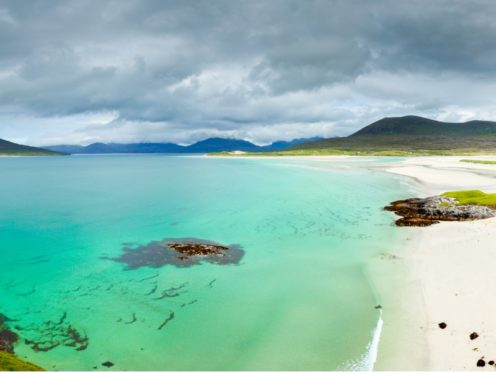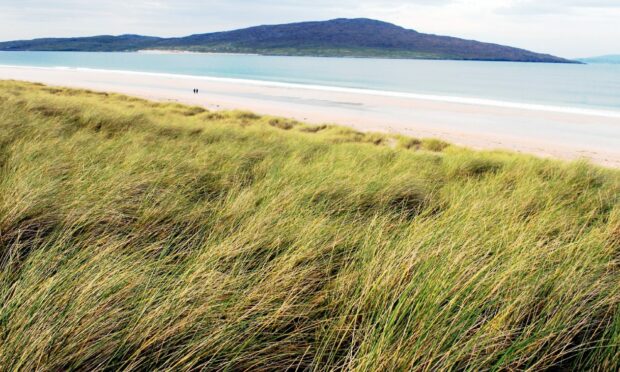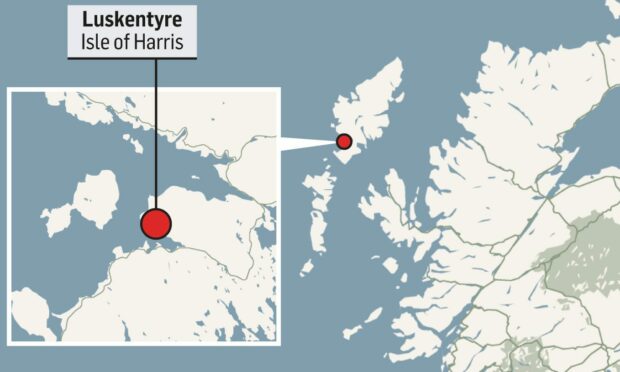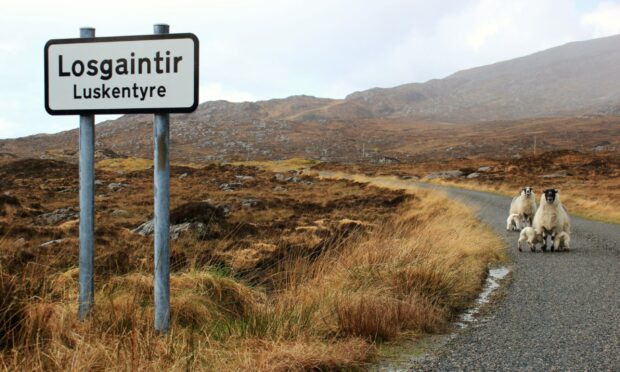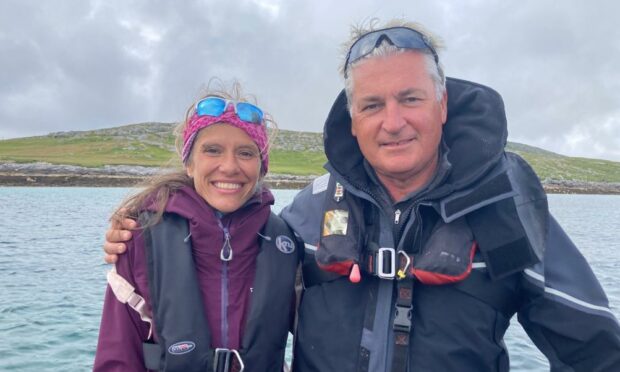It may not be obvious to the tourists who flock to its world-renowned beach, but people in Luskentyre have drawn a line in the sand.
Like many parts of the Highlands and Islands, the Harris beauty spot welcomes a growing swell of visitors each year, straining its infrastructure.
It also sees an increasing number of properties becoming second and holiday homes.
Incremental changes have largely been accepted as crofters diversify into tourism.
But it seems Luskentyre and its residents have reached their limit.
Glamping pods plan prompts unprecedented opposition
A plan is seeking to erect eight glamping pods, each able to house four people, overlooking the beach, voted 13th best in the world by TripAdvisor.
It is being met with unprecedented opposition from the community, politicians and estate owners.
Local people say the scale of the proposal is irresponsible and has “crossed a line”.
They fear setting a precedent for development in the village – where 57% of houses are already holiday homes or self-catering properties – and other fragile areas.
Concerns include additional pressure on the village’s single-track road and other infrastructure.
Objectors also say the pods could damage wildlife and a Site of Special Scientific Interest.
They claim there is “apathy” from public bodies towards stopping such development.
Andrew Bartlett wants to install the pods at 1 Luskentyre for use for six months of the year.
The West Harris Trust says the property already has three houses and consent for an additional three holiday pods.
Crofts are ‘overdeveloped’
It points out if the application is approved, the site would have 14 buildings where three years ago there was just one.
With just 30 names on the local electoral roll, it could also in future house double the village’s entire resident population.
Last year, a two-bedroom cottage at 1 Luskentyre, with “second home or holiday let potential”, was sold with an asking price of over £385,000.
The trust has sought to regulate the number of holiday homes and self-catering cottages and applied for ‘control area’ status.
“This application by the non-resident croft tenant does nothing to address this issue but escalates the already high imbalance against private residences”, secretary and director Neil Campbell says in its objection.
“In our view a number of crofts in West Harris are overdeveloped, No 1 Luskentyre being one of those.”
The volume of visitors has already led to traffic issues, including funeral processions struggling to reach the local cemetery.
Alan Ross, chairman of South Harris Community Council, believes additional tourists could overwhelm the village and access road.
‘This just goes too far’
He said: “The last thing we need is more visitors using that road. The situation at the site is ridiculous, it’s just full up.”
MP Angus MacNeil, who visited the area recently, added: “There is a lot of concern about what it might mean for an already congested, narrow, single-track road.”
Dan Parry and his wife Ann live in Luskentyre, where Ann was born and brought up.
Mr Parry said: “There is a very strong feeling that this just goes too far.
“It sets a very dangerous precedent to developers buying up plots of land and creating excessive developments of this nature, detrimental to the local communities.
“I see this as a very slippery slope to the overexploitation of the Western Isles for profit.
“Harris is an extraordinary place where tourism must be carefully managed and not relentlessly expanded.”
Local councillor Grant Fulton believes the application is excessive and akin to a “holiday camp”.
He said: “No one in Harris has an issue with a crofter putting up a pod or two on their land for additional income. But something of this size is beyond the pale.
“I have grave concerns about the development and I hope it won’t go ahead.”
Increase in tourism has created ‘dire situation’
Adam and Cathra Kelliher, owners of Borve Lodge Estate and island of Taransay, have a series of objections.
These include a threat to wild salmon and seatrout spawning grounds in the Laxdale River, which the estate owns.
Western Isles District Salmon Fisheries Board says it is looking into the issue.
The Kellihers say septic tank run-off from homes, specifically self-catering properties, has led to reclassification of the Luskentyre Estuary waters from Class A to Class B for shellfish consumption.
The application will accelerate the decline in water quality and increase the threat to wildlife, they claim.
The couple also warns of threats to an otter population and machair on the SSSI.
They say the proposal ignores the “dire situation” that an increase in tourism has brought to Luskentyre.
Islands MSP Alasdair Allan raised the issues with Comhairle nan Eilean Siar which will consider the application on September 28.
He said: “The capacity of this development would be greater than the current population of Luskentyre and would mean that local residents formed a minority of the village for most of the year.
Applicant says pods will have ‘negligible impact’
“As such, I hope Comhairle nan Eilean Siar gives proper attention to residents’ concerns when making its decision.”
The pods will be pre-fabricated off-site and transported to Luskentyre.
According to the applicant, they will lead to “minimal increase” in traffic and will have “negligible impact” on the surrounding area.
Calum MacLeod, spokesman for Mr Bartlett, said: “I totally understand the concerns. We design glamping sites throughout the UK and further afield and it is the first concern of local people that glamping may be an issue in their area.
“However, when it comes to the site being open, that opinion usually changes quite quickly.”
Mr Macleod, whose firm has other glamping sites at Achmelvich and Brora on the NC500, argues the Luskentyre proposal would generate income and employment.
He added: “It will open up a lot of jobs for the local community. It will bring in a lot of money which will help the local economy and may even help improve some of the infrastructure.”
He said, over a year, a four-person pod is used by 2.3 people, on average.
This would mean the Luskentyre units being used by around 18 people rather than 32.
“In reality, there will be much fewer people and much less of an issue than people realise.
Plans will be in place to protect wildlife
“The people using them are not causing any problems. They come to spend time away from the city to relax, go for a walk and typically enjoy nature.”
Johanne Ferguson, NatureScot’s Outer Hebrides operation manager, said it has reviewed the proposal to ensure it won’t have a significant effect on the Luskentyre SSSI.
She said: “We are working with Western Isles Council and the developer to make sure that, if the proposal is approved, plans are in place to protect wildlife and the machair.”
